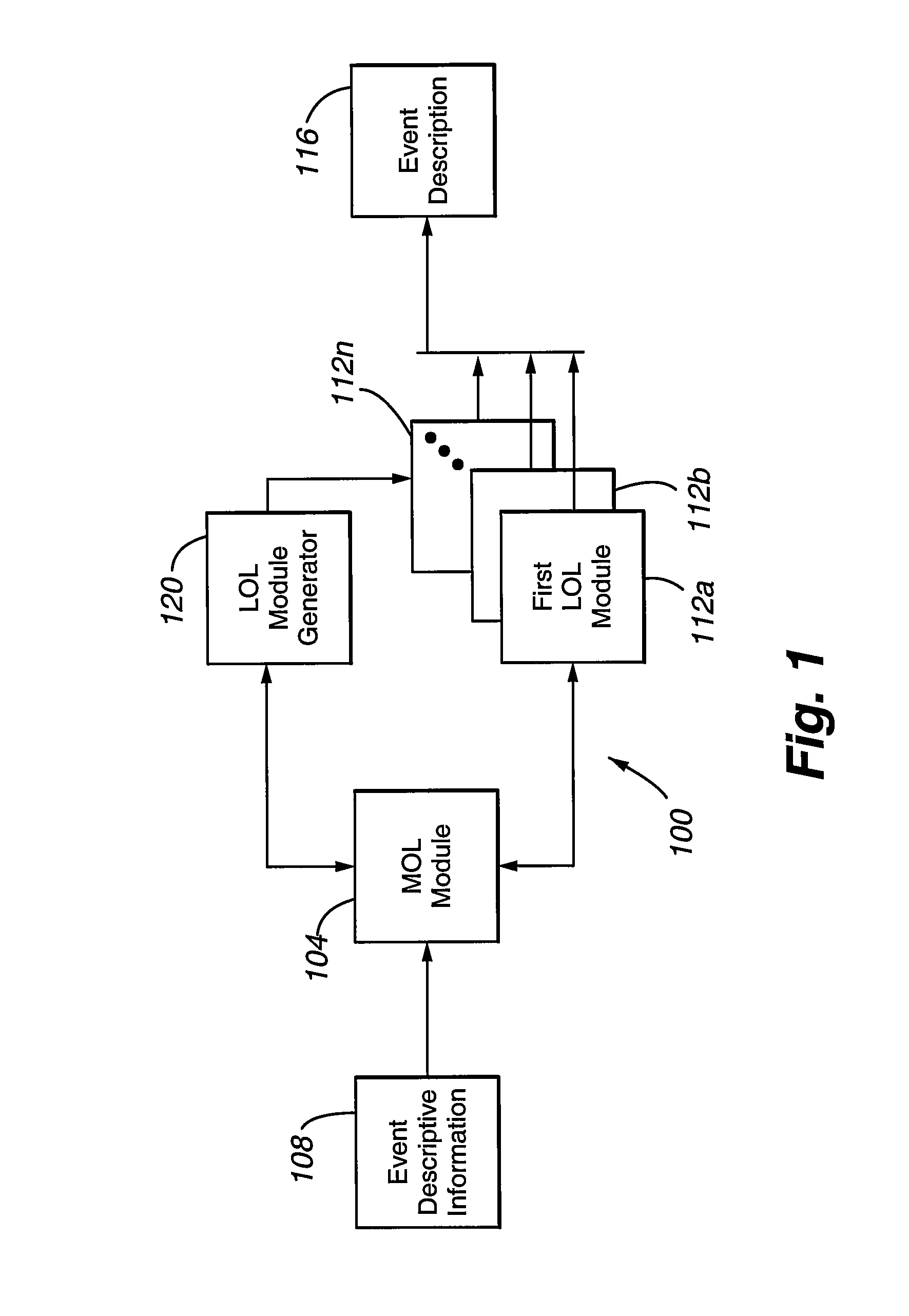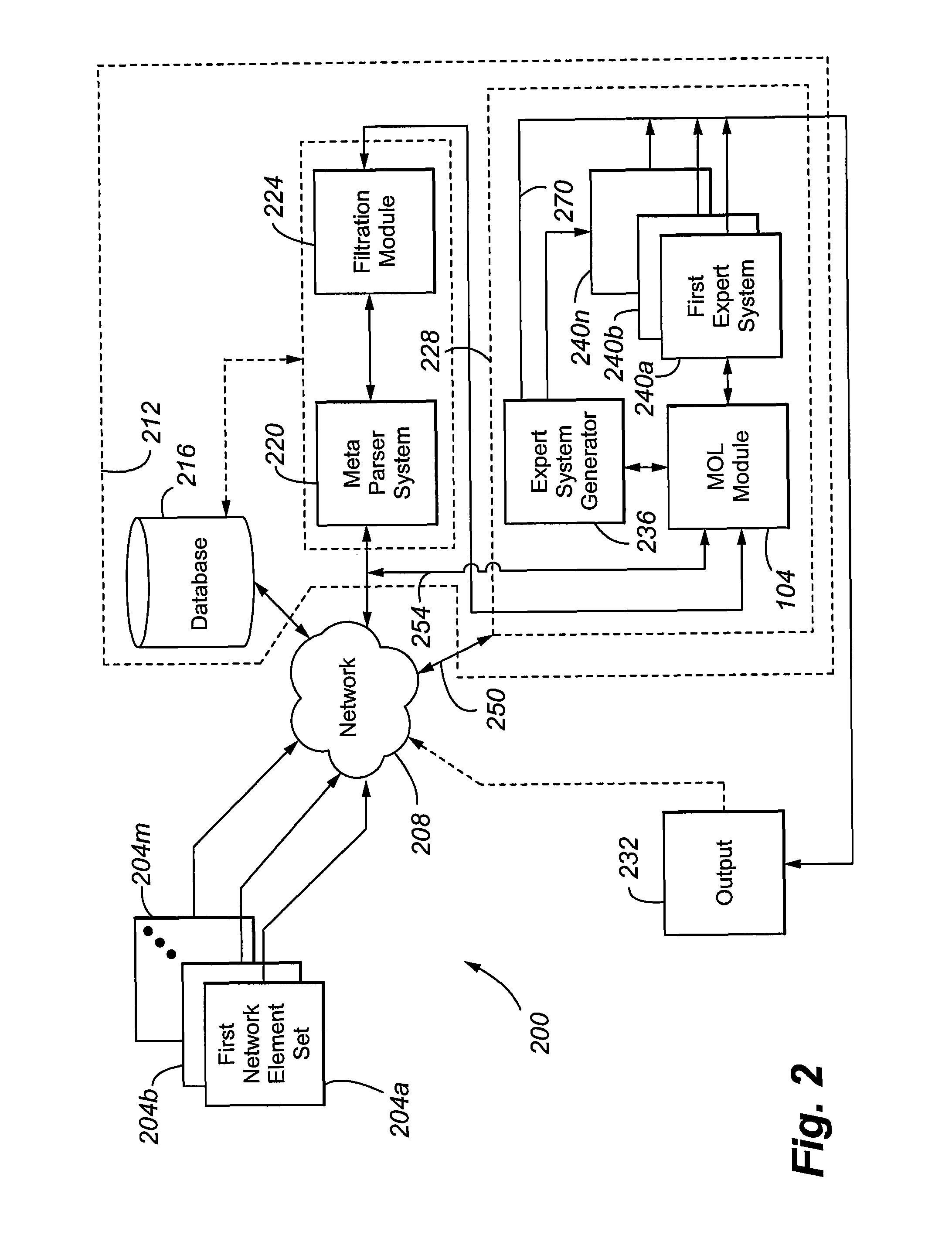Higher order logic applied to expert systems for alarm analysis, filtering, correlation and root cause
a technology of alarm analysis and logic, applied in the field of intelligent systems, can solve the problems of not fully implementing higher-order logic, not having a full implementation, and missing important features of the prolog, etc., and achieves the effect of increasing abstraction, facilitating propagation, and being computationally efficien
- Summary
- Abstract
- Description
- Claims
- Application Information
AI Technical Summary
Benefits of technology
Problems solved by technology
Method used
Image
Examples
Embodiment Construction
[0054]The General Architecture
[0055]FIG. 1 depicts a behavioral analysis and identification system according to a first embodiment of the present invention. The system 100 includes the following: a Many-Order Logic (MOL) module 104 to receive and preliminarily analyze event descriptive information 108 associated with an automated entity, first, second, . . . nth Lower Order Logic (LOL) modules 112a-n to analyze the information 108 and describe the associated event as event description 116, and an LOL module generator 120 to create an LOL module 112 to analyze selected event descriptive information 108 associated with a selected type and / or configuration of the automated entity. Although not shown, the MOL module 104, LOL module generator 120, and first, second, . . . nth LOL modules 112a-n can be employed by a common processor on a common computer or by multiple processors on multiple computers.
[0056]The event descriptive information 108 can have arbitrary symbols and / or syntactical...
PUM
 Login to View More
Login to View More Abstract
Description
Claims
Application Information
 Login to View More
Login to View More - R&D
- Intellectual Property
- Life Sciences
- Materials
- Tech Scout
- Unparalleled Data Quality
- Higher Quality Content
- 60% Fewer Hallucinations
Browse by: Latest US Patents, China's latest patents, Technical Efficacy Thesaurus, Application Domain, Technology Topic, Popular Technical Reports.
© 2025 PatSnap. All rights reserved.Legal|Privacy policy|Modern Slavery Act Transparency Statement|Sitemap|About US| Contact US: help@patsnap.com



